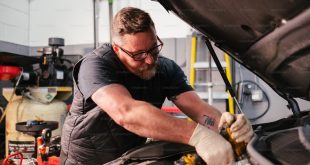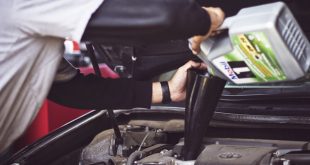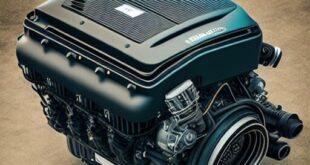You can’t appreciate the suspension system of a car without knowing that it is responsible for making driving experience safe and enjoyable. A car suspension system consists of all parts that connect the vehicle to the road. Every car, truck, and utility vehicle has a suspension that is designed to do three things: Supports the vehicle, Absorbs bumps and other shocks, Allows the vehicle to turn in response to steering input from the driver. Modern suspensions are composed of hundreds of different parts, and cars vary tremendously in their suspension designs, but every suspension is composed of certain major subsystems, some of which are more prone to failure than others. The major types of suspension components and systems, and how prone they are to failure, are as follows:
Wheels And Tyres

Tyres provide traction for acceleration, braking, and cornering, and they absorb small bumps. Tyres wear over time, and are subject to cuts and punctures from hitting sharp objects, and to slow or sudden leaks from impacts. On the other hand, wheels fail (from bending or cracking) much less often, usually only in response to hard impacts from accidents or hitting potholes. Wheel alignments and tyre balancing helps to maintain very good handling when driving.
Springs

Every car and truck today has some sort of mechanism to absorb large bumps, and this always includes some form of spring, a metal part that bends in response to force. Springs can sometimes break when the vehicle hits a bump very hard, and many will sag eventually (after many years), but in general these parts are much less prone to failure than most other suspension components.
Shock Absorbers And Struts

While springs absorb the bumps, shock absorbers (or, in cars that have them, struts, which are similar to shocks) dampen the motion of the springs after a bump, keeping the vehicle from bouncing excessively. Shocks and struts are filled with a thick oil, and over time the oil can leak out, causing the shock or strut to fail. Impacts and accidents can also cause leakage or can damage delicate internal parts.
Linkages

Every suspension includes various rods and other connecting pieces that collectively keep the wheels where they’re supposed to be relative to the rest of the vehicle. Most of these linkages are solid metal parts that rarely fail except in major accidents. However, sometimes linkages and associated bushings are sold together, and the failure of a bushing can necessitate replacing the whole assembly.
Bushings, Bearings And Joints

Because most parts of any suspension must be movable, the various linkages are connected by flexible connections. These include bushings and bearings, which are connections that allow a small amount of twisting or sliding, often without needing lubrication, and joints, which in automotive applications often use a lubricant such as grease to allow for controlled movement. Some suspension bushings are made of rubber, which can become brittle or break over time, leading to failure. Many joints tend to wear out, leading initially to looseness and eventually to failure. A couple of the most common culprits are tie rod ends, which are lubricated joints that connects certain steering linkage parts, ball joints, which are found in both the steering system and attached to the control arms, and the bushings that separate the control arms from the vehicle’s frame.
Steering Systems

Every steering systems contains numerous linkages, some joints such as the tie rod ends mentioned above, and some sort of steering box, the mechanical device that converts rotation of the steering wheel into movement of the car’s wheels. In general, linkages aren’t very likely to fail, while components such as tie rod ends are. Steering boxes wear out eventually, with rack-and-pinion steering systems in vehicles equipped with hydraulic power steering being the most failure prone.
Hydraulic Power Steering

Many vehicles are equipped with power steering. Of the two types of power steering, hydraulic systems (i.e., those that use a high-pressure fluid to help the driver turn the wheels) are more failure-prone. Fluid can leak from high-pressure lines, delicate valves occasionally wear out, the belt that drives the power steering pump can loosen or break, and eventually the pump itself may fail. Replacements of pressure hose and replacement of broken belts are common.
Electric Power Steering

More and more power steering systems found in modern cars and trucks are electric, not hydraulic. Electric power steering systems include various sensors, wires, and actuators (motors), any of which can fail, but luckily such failures are less common than failures of hydraulic components. That’s a lot of parts, but it can be simplified into the following rule of thumb: softer parts wear out more quickly than harder ones, and wet ones more than dry ones. Thus, for example, a soft rubber bushing that has to change shape with every bump will probably need replacement (from wear or complete failure) before a solid metal rod will, and a shock absorber that contains fluid is more likely to fail than a metal spring.
Getting your vehicle’s suspension system to work optimally is very important because a worn out part could have a domino effect on other parts. No one likes to hear those rattling or clinking noises when driving on a rough road with bumps. You can freely ask us questions through our chat window, our representatives are online to answer any confusing complaints about your suspension system. You can schedule an appointment with one of our suspension experts by visiting: I Need Help With My Suspension or give us a call, we will be happy to talk with you.
 Spot Dem Everything About Cars
Spot Dem Everything About Cars




